Q
How far can a 2018 Volvo XC90 go on a full tank?
The fuel tank capacity of the 2018 Volvo XC90 is approximately 71 liters. According to official data, its combined fuel consumption is around 8.5 liters per 100 kilometers. So, when the tank is full, it's expected to travel about 835 kilometers. However, the actual range will be affected by factors such as driving habits, road conditions, and vehicle load.
In Malaysia, due to heavy urban traffic and less high - speed driving, the actual range might be slightly lower than the official figures. It is recommended that car owners regularly maintain their vehicles to ensure fuel efficiency.
As a luxury SUV, the Volvo XC90 is well - known for its safety and comfort. The Drive - E engine technology it's equipped with strikes a good balance between fuel economy and power performance, making it suitable for long - distance trips and family use.
If owners want to further improve fuel efficiency, they can avoid sudden acceleration and braking, and keep the tire pressure within the recommended range.
Special Disclaimer: This content is published by users and does not represent the views or position of PCauto.
Related Q&A
Q
What is the safest European car in 2024?
One of the safest European rides you can get your hands on in 2024 is the Volvo XC90. This SUV bagged a full five-star rating in Euro NCAP crash tests, and its standard City Safety system is a real lifesaver when it comes to avoiding fender benders. Throw in advanced driver aids like blind-spot monitoring and lane-keeping assist, and it’s a solid fit for Malaysia’s ever-unpredictable traffic chaos.
Not to be outdone on the safety front, the Mercedes E-Class brings its A-game too. Its PRE-SAFE® system is pretty clever – it’ll automatically tighten the seatbelts and adjust the seats if it senses a crash is about to go down. Then there’s the BMW X5, which scored big thanks to its tough-as-nails body structure and airbags galore, keeping everyone wrapped up nice and safe.
For Malaysian buyers, picking a safe car isn’t just about those crash test stars. You’ve gotta think about how it handles our local climate too. Things like brake systems built with heat-resistant materials – trust me, you’ll appreciate that in our scorching sun – and how well the Electronic Stability Control (ESC) performs when the roads get slippery during the monsoon.
Cool thing is, a lot of European brands have tweaked their rides for Southeast Asia – better cooling systems, upgraded rust protection, that sort of stuff. My two cents? Always take the car for a test drive first, and chat with your local dealer about the specific adjustments they’ve made to suit our conditions. That way, you know you’re getting something that’s not just safe on paper, but ready for our roads too.
Q
Is the XC90 worth buying?
The Volvo XC90 is a premium SUV that definitely deserves a spot on your shortlist, especially here in the Malaysian market. It's renowned for its top - notch safety credentials and sleek, minimalist Scandinavian design. From the start, the XC90 comes standard with Volvo's latest City Safety suite – think autonomous emergency braking, lane - keeping assist, and other useful features. For families who prioritize safe travels, that's a huge plus. When it comes to performance, there's a range to choose from: T5, T6, and the T8 plug - in hybrid. The T8, in particular, is an excellent choice for Malaysia's varied road conditions, blending decent fuel efficiency with ample power when you need it. Upon entering, you'll find eco - friendly materials and exquisite craftsmanship. Pair that with the Sensus infotainment system, and you've got a cabin that's equal parts tech - savvy and comfortable. However, there are a few things to note: being an imported vehicle, maintenance and repair costs for the XC90 in Malaysia can be on the higher side, and its resale value doesn't quite match some Japanese luxury brands. What really sets the XC90 apart in its class is its unique design language and that industry - leading safety kit. If these features are at the top of your priority list and your budget allows, it's a strong contender. I'd recommend taking it for a spin alongside rivals like the Lexus RX or BMW X5 before making your final call – test drives are key to figuring out what truly fits your needs.
Q
Where is the XC90 built?
The Volvo XC90 is primarily built at the automaker's flagship Torslanda plant in Sweden, a facility renowned for its precision engineering and commitment to eco-friendly manufacturing practices. That said, some markets might also receive XC90s from Volvo's Chengdu factory in China – part of the brand's global production network that ensures efficient supply across different regions. For Malaysian buyers, rest assured that whether your XC90 rolls off the line in Sweden or China, it adheres to Volvo's strict global quality standards. This means rigorous safety testing and a suite of premium features come standard, including the City Safety collision avoidance system and Pilot Assist semi-autonomous driving aid across all variants. It's worth noting that XC90s brought into Malaysia through official channels are configured with right-hand drive, and have their air conditioning systems and rust-proofing treatments optimized for tropical climates. Local owners also benefit from Volvo Car Malaysia's generous 5-year factory warranty and complimentary scheduled maintenance package, offering peace of mind throughout your ownership journey.
Q
What are the changes in the Volvo XC90 2025?
The 2025 Volvo XC90, a luxury SUV, focuses its major upgrades on tech features and powertrain. The exterior sticks with the brand's classic Scandinavian minimalist design language, though expect slight tweaks to the front grille and Thor's Hammer headlights to boost its presence. Malaysian buyers will appreciate the new smart air purification system, which does a solid job tackling dust and pollution in our tropical climate.
Inside, we're likely looking at a more advanced Android-based infotainment system, now with wireless Apple CarPlay and improved voice control. They're also doubling down on sustainable materials, which really highlights the brand's commitment to eco-friendliness.
Under the hood, there should be a plug-in hybrid variant, and word is the all-electric range might jump to over 60km – perfect for those short city hops around Malaysia. The 48V mild-hybrid system should also help keep fuel consumption in check.
Safety, as always, is a strong suit. The new driver monitoring system and upgraded City Safety suite should make navigating KL's chaotic roads a bit less stressful.
One thing to note for Malaysian buyers: keep an eye out for tax incentives on locally assembled models. Also, Volvo's battery warranty is typically 8 years, which is a big plus if you're going for the hybrid.
If your budget's a bit tight, it's worth cross-shopping with German or Japanese rivals in the same class. But honestly, the XC90's Scandinavian focus on safety and that genuine commitment to sustainability? That's still its ace in the hole.
Q
Does the 2025 Volvo XC90 have remote start?
The 2025 Volvo XC90 does come with remote start functionality, allowing owners to fire up the vehicle via the Volvo Cars mobile app and pre-condition the cabin temperature – a total lifesaver given Malaysia's sweltering heat. It's a nice touch that boosts everyday usability and shows Volvo's commitment to upping its smart connectivity game. Beyond remote start, the XC90 packs some serious tech punch with features like Pilot Assist semi-autonomous driving and the City Safety suite, which really dial up both safety and comfort behind the wheel. For Malaysian buyers, the 48V mild hybrid setup should help eke out better fuel efficiency in stop-and-go traffic, while the Scandinavian-designed luxury interior and seven-seat layout make it a solid pick for family hauling. Just keep in mind, you'll need a decent network connection for remote start to work, and some features might require subscribing to Volvo's connected services package.
Q
How much should I pay for a 2025 Volvo XC90?
The 2025 Volvo XC90 is expected to hit Malaysian showrooms with a price tag ranging from RM 400,000 to RM 500,000, though the final figure will hinge on trim levels and optional extras. The T8 plug - in hybrid variant, for instance, will likely nudge towards the higher end of that spectrum, while the base B5 model should offer a more accessible entry point. Your best option is to visit or call your local authorized Volvo dealer, as they will have the latest information on the most current pricing and any ongoing promotions.
As a luxury seven - seater SUV, the XC90 has always stood out for its Scandinavian design ethos, top - tier safety kit, and eco - friendly interior materials. Across the range, you’ll find the City Safety system as standard, a big plus for peace of mind. Power - wise, there’s a choice to suit different needs: such as mild hybrid options for those seeking a balance, or the plug - in hybrid T8 for drivers aiming to maximize electric - only driving. It’s a solid pick if you’re a family - focused buyer who also cares about sustainability.
Now, let's discuss the tax situation. Malaysia’s import duties can bump up the price of foreign cars significantly, so don’t be surprised if the XC90 commands a premium compared to some other markets. However, to enhance its competitiveness, Volvo Malaysia typically throws in a 5 - year warranty and complimentary servicing package – that’s a nice added layer of value.
Before you commit, it’s worth cross - shopping against rivals like the Lexus RX or BMW X5. These models are in a similar category, but it's crucial to ensure you are comparing equivalent specifications and, importantly, after - sales policies – those can vary and make a real difference in the long run.
Q
Does the 2025 XC90 have wireless charging?
From what we're hearing, the 2025 Volvo XC90 does come with wireless charging – you'll usually find that tucked away under the front center console or in the armrest bin, perfect for drivers and passengers to juice up their Qi-compatible phones. This feature's pretty standard on the higher-spec models in Malaysia, fitting right in with local folks' love for tech that makes life easier. Wireless charging has basically become a must-have in luxury SUVs these days. Sure, brands like BMW with the X5 and Mercedes with the GLE offer similar stuff, but how fast it charges can vary a bit depending on your phone model and even what kind of case you're using. Pro tip: take off those super thick cases if you want the quickest charge. For Malaysian buyers eyeing the 2025 XC90, keep an eye on the 48V mild hybrid system and the PHEV plug-in hybrid options too. These tech bits really help with fuel efficiency, which is a big plus for those stop-start city traffic jams we all know too well. If you're scratching your head about specific features, your best bet is to hit up an authorized Volvo dealer in Malaysia for the latest spec sheets. Sometimes configurations can change a bit based on the market or the optional packs you pick.
Q
How long does it take to charge a 2025 XC90?
Charging times for the 2025 Volvo XC90 depend on the charging equipment and battery capacity. Using a home 11kW AC wallbox, a full charge from 0% to 100% takes roughly 8 hours – perfect for overnight charging or during extended parking. For road trips when you need a quick top-up, a 50kW DC fast charger can get you from 10% to 80% in around 1.5 hours.
Here in Malaysia, with our hot climate, it’s wise to avoid fast charging during peak heat to help preserve battery health. That said, the XC90’s battery management system does a solid job of regulating temperatures to keep things safe and efficient. Malaysia’s charging network is steadily growing too, with major cities like Kuala Lumpur and Penang already boasting a decent number of charging stations. You can easily find nearby spots through the Volvo official app or local charging operator platforms.
For daily use, keeping the battery level between 20% and 80% is a good habit to extend its lifespan, and if you’re leaving the car parked for a while, aim for around 50%. As a plug-in hybrid or fully electric model, the XC90 qualifies for tax incentives in Malaysia, and running on electric mode really cuts down on fuel costs – ideal for city driving.
Q
What is the battery range of the 2025 XC90?
The 2025 Volvo XC90, as a plug-in hybrid (PHEV), is expected to deliver an all-electric range of approximately 80 kilometers based on the WLTP testing cycle. That's a solid figure for Malaysia's urban commutes – think a round trip from downtown Kuala Lumpur to Putrajaya, and you could feasibly do it all on electric power. Under the hood, the XC90 T8 pairs an 18.8kWh lithium-ion battery pack with a 2.0-liter turbocharged engine, churning out a combined 455 horsepower. Crucially for our tropical climate, the battery management system smartly adjusts charging and discharging strategies to maintain long-term durability, even when things get hot and humid outside.
For Malaysian buyers, PHEVs like the XC90 offer the best of both worlds: the quiet, eco-friendly benefits of electric driving for daily runs, without the range anxiety that can come with longer journeys. Throw in the local government's road tax incentives for PHEVs (thanks to that sub-2.0L engine displacement), and the running costs start to look much more attractive compared to a traditional petrol-powered SUV.
A quick heads-up though: real-world range can vary depending on how hard you crank the AC, your driving style, and the terrain you're tackling. So, it's always a good idea to swing by an authorized Volvo dealer for a test drive to get a feel for it yourself. Also, Volvo Malaysia's official website has a detailed EV charger map, which is super handy for planning those longer trips when you do need to top up.
Q
How big is the fuel tank on a 2025 XC90?
The 2025 Volvo XC90 comes with a fuel tank capacity of around 71 liters. This design strikes a nice balance between meeting long-distance driving needs and keeping an eye on fuel efficiency – perfect for Malaysian drivers, whether you're navigating city commutes or heading out on a cross-state road trip, it should deliver plenty of range. As a luxury SUV, the XC90's tank size sits comfortably in the upper-mid range for its class. For context, the BMW X5 has an 83-liter tank and the Mercedes GLE an 85-liter one, but the XC90, thanks to its efficient powertrain tech and mild-hybrid setup, still manages to put in an impressive real-world range performance. Here in Malaysia, with fuel prices that can swing and those frequent long drives, it's a good idea to keep an eye on your tank and fuel system regularly to keep things running at their best. Also, planning your refuel stops makes sense, especially if you're venturing into more remote areas. On top of that, Volvo's smart driver assistance systems can even help optimize fuel usage, giving your overall efficiency an extra boost.
Latest Q&A
Q
What is the top model of Toyota Yaris 2019?
The top trim of the 2019 Toyota Yaris is the 1.5G variant. It's powered by a 1.5-liter Dual VVT-i naturally aspirated engine that cranks out 107 horsepower, paired with a 7-speed CVT transmission for a smooth driving experience and solid fuel efficiency. This trim comes standard with LED headlights, a smart key system, automatic climate control, and a 7-inch touchscreen infotainment system that supports Apple CarPlay and Android Auto, boosting both tech appeal and convenience. On the safety front, the 1.5G is equipped with vehicle stability control, six airbags, and a reverse camera to keep you secure on the road. As the flagship of the Yaris lineup, the 1.5G steps up its game in comfort and functionality, making it a solid pick for shoppers after a high-quality subcompact. It's worth noting that the Yaris has long been known globally for its reliability and low maintenance costs, and the 2019 model gets tweaks to handling and sound insulation, further cementing its competitiveness in the segment.
Q
What are the trim levels for the 2019 Toyota Yaris?
The 2019 Toyota Yaris was available locally in three main trim levels: 1.5E, 1.5G, and 1.5V. All came equipped with a 1.5-liter Dual VVT-i naturally aspirated engine paired with a 7-speed CVT transmission. The base 1.5E came standard with LED daytime running lights, manual air conditioning, and a 2-DIN audio system. Stepping up to the 1.5G added smart keyless entry, push-button start, and 15-inch alloy wheels. The top-of-the-line 1.5V rounded things off with automatic climate control, a leather-wrapped steering wheel, and paddle shifters. It's worth noting that this Yaris featured Toyota's latest GOA body technology, and across the entire lineup, you got seven airbags, VSC vehicle stability control, and HAC hill-start assist as standard safety kit. If you're considering a used one, make sure to check the CVT transmission fluid change records and the condition of the undercarriage—this powertrain is pretty sensitive to regular maintenance. While competitors like the Honda Jazz offer more flexible interior space, the Yaris leans more towards comfort with its noise insulation and chassis tuning, making it a solid pick for daily city driving.
Q
What is the mileage of Toyota Yaris 2019?
The fuel efficiency of the 2019 Toyota Yaris varies depending on the trim and powertrain. The version with the 1.5-liter naturally aspirated engine averages around 6.5 L/100km in city driving, dropping to roughly 5.0 L/100km on the highway. The hybrid model is even thriftier, with a combined fuel consumption of about 4.0 L/100km. Actual numbers might fluctuate slightly based on driving habits and road conditions.
This car has gained popularity for being economical and practical, making it a solid pick for daily commutes and family use. Maintenance costs are relatively low, parts are readily available, and repairs are hassle-free. For shoppers who prioritize fuel economy, the Yaris is a great option—plus, its reliability and durability have been proven in the market, saving you money over the long haul. To squeeze out even better mileage, keeping your tires properly inflated and avoiding hard acceleration or sudden braking can go a long way in boosting fuel efficiency.
Q
How big is the gas tank on a 2019 Toyota Yaris?
The 2019 Toyota Yaris comes with a 42-liter fuel tank, a design that meets daily commuting and short to medium-distance travel needs, balancing fuel efficiency with practicality. Powered by a 1.5-liter naturally aspirated engine paired with a CVT transmission, this model delivers a combined fuel consumption of approximately 5.2 liters per 100 kilometers, meaning a full tank theoretically offers a range of around 800 kilometers. It's worth noting that the actual usable tank capacity might be slightly less than the rated value; this is a standard industry practice to leave safe space for fuel expansion. We recommend drivers refuel when the fuel level drops to 1/4 to prevent premature wear on the fuel pump from prolonged operation at low levels. For more precise tank specifications, check the vehicle owner's manual or use the fuel gauge reset method for actual testing. Additionally, regular maintenance of the fuel system can effectively maintain tank cleanliness and fuel supply efficiency.
Q
What oil does a 2019 Toyota Yaris take?
The 2019 Toyota Yaris recommends using fully synthetic 0W-20 motor oil that meets API SN or higher standards. This low-viscosity oil optimizes cold-start protection and improves fuel efficiency. If this specific viscosity isn't readily available, 5W-30 can be used as a substitute, though you might notice a slight increase in fuel consumption. For maintenance, it's advised to change the oil every 10,000 kilometers or 6 months, whichever comes first. In hot climates or with frequent short trips, you may want to shorten the oil change interval a bit. A key point to note: some models with the 1.5L 2NR-FE engine equipped with a start-stop system must use "Resource Conserving" labeled fuel-efficient oil to ensure proper system operation. When choosing oil, prioritize products that meet the Toyota-certified ILSAC GF-5 standard. These oils have a more balanced additive package, effectively preventing low-speed pre-ignition and protecting the emission control system. If your vehicle is still under warranty, it's best to use the original factory oil to avoid warranty disputes. Also, regularly check the oil dipstick to ensure the level is within the normal range—excessive oil consumption could be an early sign of aging piston rings or valve seals.
View MoreRelated News
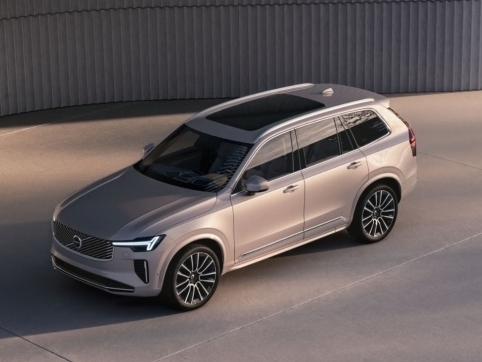
Volvo XC90 Facelift Launched in Malaysia with Exterior and Interior Changes
JohnApr 11, 2025
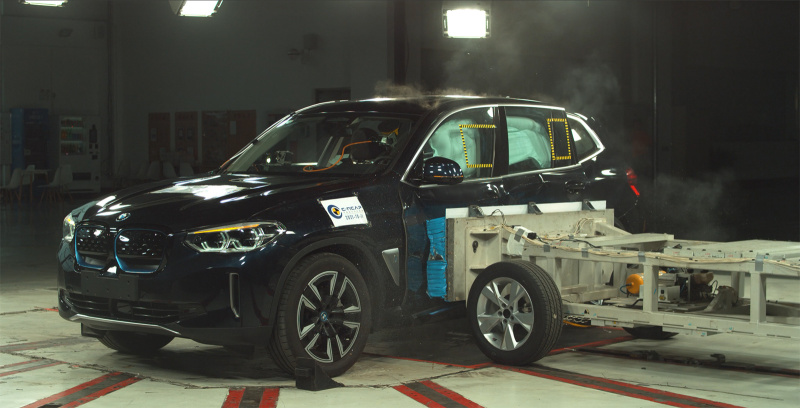
Structure, Materials, Airbags, What are the main evaluation criteria for automotive safety performance?
WilliamSep 14, 2024
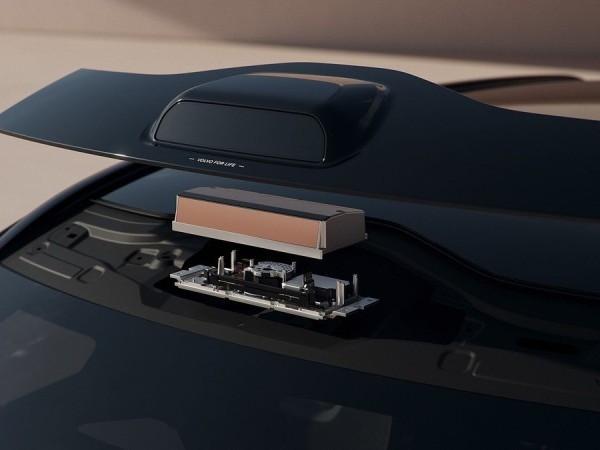
Warning: Vehicle LiDAR Can Damage Your Phone Camera!
AshleyMay 19, 2025

Well-Planned Space: The Exceptional Practicality of the Volvo XC60
Kevin WongMay 16, 2025
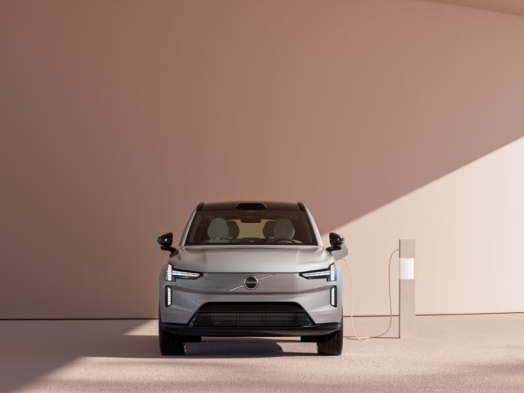
Volvo EX90 Electric SUV Now Available – RM 442,888
LienApr 11, 2025
View More












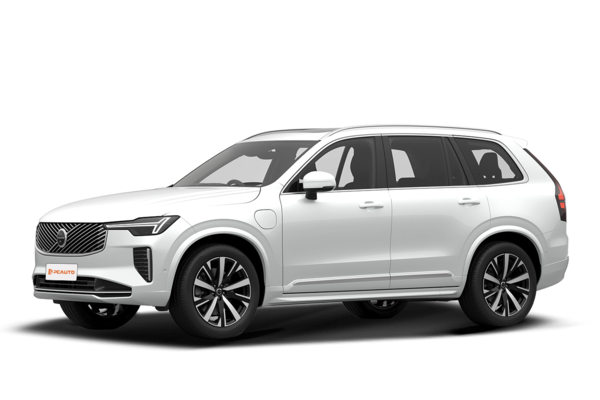
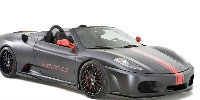




Pros
Cons